Best Overall: HIY Systems Rail
PROFESSIONAL GRADE HIGH STRENGTH RAILS
Top Pick: Cabinet Rails at HIY Systems
IN THIS GUIDE:
› BEST OVERALL: HIY SYSTEMS
› BUDGET OPTION: HANGMAN FRENCH CLEAT
› CABINET LIFT: CABINETIZER 76 LIFT
› CABINET CLAW: PONY CLAW
› GARAGE CABINET RAIL: GLADIATOR SYSTEM
Cabinet hanging rail systems and brackets can make any kitchen installation faster. Because the guesswork of installing screws to the wall is removed, most installers find the installation sturdier.
While the traditional approach requires measurements, drilling, and cabinet jacks, a cabinet hanger lets you skip that. By attaching a rail, you lift the cabinets and connect them.
Things to look for:
- Complete kit featuring all the nuts, bolts, wall anchors, and screws
- Heavy-duty design for supporting cabinet weight
- Slim profile
Lastly, consider other cabinet installation accessories like clamps, lifts, and jigs to make the process easier.
Page Contents
Choosing a Hanging System
Even for woodworkers, cabinet hangers are one of those cabinet hardware accessories that are hard to find.
While many ready-to-assemble (RTA) cabinets come with them standard, cabinets you may make or buy and want to hang with a cabinet rail system take a lot of work to go by.
Features To Look For
- Heavy-duty construction
- Aluminum is preferred as it will not rust in salty environments
- Extendable rails
- Cabinet clips
- Leveling shims
- Wall anchors where studs aren’t available
Best Cabinet Hangers
The best cabinet rail hangers combine a complete system of wall mounting kits, screw anchors and heavy duty aluminum rails that will securely hold hundreds of pounds of weight. Designed after the traditional french cleat, a high quality hanger will include both the rails and fasteners to securely attach the cabinet to the rail.
1. Best Overall: HIY Systems Cabinet Rail Systems
Built specifically for hanging cabinets, the HIY system is a high-quality solution for kitchen installation using heavy gauge aluminum rail.
Overview
- Uses: Cabinets, mirrors or other heavy wall mounted projects
- Indoor/Outdoor: Indoor
There are NOT a lot of great cabinet hangers on the market.
What makes the Eazy-Hang a one-of-a-kind in its features:
- Long lengths from 60″ to bundles that cover 250″+ installations (that’s five to twenty or more feet)
- Extra long rails that are easy to install and level as ONE connected unit
- Heavy-duty aluminum rail construction
- All-in-one package include all the shims and screws you’ll need
Pros
- Heavy gauge construction
- Sold in complete system kits (rather than just a rail)
- Easy to install
- Great instructions
Cons
- As a kit, higher priced than stand-alone cabinet rails
HIY Systems Cabinet Hangers
2. Hangman Cabinet Hanger (French Cleat)
See on Amazon: Hangman Cabinet Hanger
The Hangman option is a good option for a small installation with lightweight cabinets that will meet the load capacity of this cleat. This traditional cleat will install simply to the wall at a budget price – but may require some customization to the back of the cabinet.
Key features:
- The cleats are mounted separately
- Minimal cabinet clearance is required
- Simple design that can be used for mirrors, shelving, headboards, or other wall-mounted wood projects
Pros
- Value priced
- Heavy duty design
- Easy to use
Cons
- Doesn't come as a kit
- Lacks the size, instructions and accessories of the Eazy-Hang
- Will not work on a flat backed cabinet
3. Orange Aluminum Cabinet Hanger with French Cleat Design
See on Amazon: Hangman Cabinet Hanger
For custom cabinets or factory cabinets with the proper clearance, the Orange Aluminum hangers feature:
- Thin design
- Fast removal
- Support for #8 screws
- Founded in 2007, long history of making products
Pros
- Heavy duty
- Simple to use, 8" holes on center
- Requires 5/8" lift-off clearance
Cons
- Doesn't come as a kit
- Lacks the size, instructions and accessories of the Eazy-Hang
- Will not work on a flat backed cabinet
4. Gladiator Garage Cabinet hanging Rail System
See on Amazon: Hangman Cabinet Hanger
Are you installing cabinets in a garage? Or, making wood garage cabinets and want to use a hanging system to take your cabinets down (perhaps you’re moving in the future)?
Since many home garages use a cleat system for storing tools and other shop supplies (an excellent way for visual organization!), a cabinet hanging rail system will fit into the design. And offer quick installation without locating studs.
Pros
- Value priced
- Heavy duty design
- Easy to use
Cons
- Only use for garage or laundry room cabinets
How to Use a Cabinet Hanging Rail System
- For custom cabinets, determine the style of cleat and installation requirements.
- Find high and low spots in the ceiling using a laser level (measuring up from the line)
- Identify the position and height of the wall-hanging rail. Remember, the cabinets will not sit flush to the ceiling and leave room for crown molding or other trim.
- Set the laser level to the required cabinet hanging rail height
- Use a stud finder to mark stud locations to attach the rail
- Install wall rail using appropriate cabinet rail screws (manufacturer-specified)
- For IKEA-like systems, attach the rail mounts to the cabinet sides
- Lift the cabinet in place and over the wall rail
- Ensure the cabinet is level and properly positioned using the laser line and a 6′ cabinet level.
- For cabinets that support bottom screw installation, install wall screws
- Install cabinet filler strips if needed
- Screw cabinets together with cabinet screws
Why Cabinet Hanger Systems Are Useful
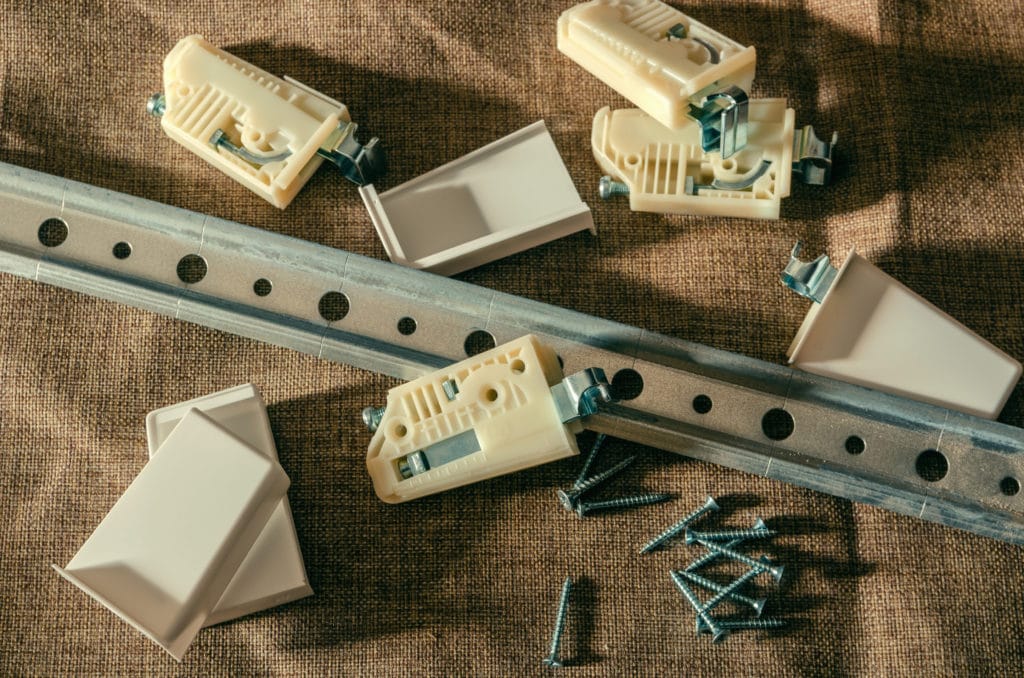
While many RTA, or ready-to-assemble, cabinets require a cabinet rail, many semi-custom cabinets come with something other than hangers.
But you can still take advantage of the flexibility and simplicity of installing cabinets with a cabinet rail system.
So, versus directly screwing cabinets to the wall, cabinet hanger systems offer these advantages:
- Secure holds since you can more clearly see the wall stud location WITHOUT the cabinets in the way
- No need to hold heavy cabinets in the air with a cabinet jack while screwing cabinets to the wall
- Complex measurement transfers are eliminated as you won’t need to map the wall stud location to the back of the cabinet and pre-drill a hole.
- Leveling cabinets are more accessible as you only need to level the rail.
- Shimming cabinet bottoms are more accessible as the top can’t move.
Lastly, the only drawback to a hanging system is you won’t be able to flush mount the cabinets directly to a ceiling. Due to cabinet hangers requiring a “lift over and set” space, you’ll need (usually) at least 1″ of clearance.
But fortunately, almost ALL cabinets now use crown molding that requires a 1″ or more offset from the ceiling.
Cabinet Hanger Installation Considerations
How much weight can a cabinet rail hanging system support?
The weight that can be supported is determined by your cabinet construction and the maximum weight capacity rating of the cabinet hanging system rail hardware. For a wardrobe-rated system, the typical weight supported is about 125 pounds per foot, but this must factor in screws, studs, the distance between studs, and the importance of the cabinet.
Will a cabinet hanging rail system work with any cabinet?
It depends, and you must follow the manufacturer’s installation specifications.
Factors for deciding if a cabinet rail will work:
- Cabinet back – will the cabinet back support a rail securely fastened to the back of the cabinet (and the wall)?
- Manufacturer specifications – strictly follow the manufacturer guidelines such as IKEA, Kraftmaid, or other lines of cabinets.
- Gap or no gap – if a rail system is supported, beware that a gap of up to 3/8″ of an inch from the wall can be expected. Not likely an issue if the cabinets are fitting between walls but a consideration if an end panel will be visible.
- Fit ceiling – most rail systems require a 1 to 2″ clearance to allow the cabinet to be “lifted” over the rail and set. Take this into consideration upfront. For most installations, this is fine, as you will install a crown molding to hide the gap.
Are you building your own? You can include recessed rail support and design for it upfront.
What screws do I need to use?
The good news is most rail systems include screws.
If not, the screws required will vary, so take into consideration the following:
- Size of screw head – the rail may limit the size of the screw head. However, most cabinets use a wood screw with a broad pan head that allows even, non-sinking support. Lastly, cabinet rails act as a washer themselves.
- Grip into the cabinet – a firm grip with deep threads that won’t tear out the cabinet material.
Need more help? For screws needed to connect the cabinets, check out our cabinet screw guide for more screws and what to order.
Will a cabinet hanging system work with IKEA or KraftMaid cabinets?
Simple answer: follow the manufacturer’s recommendations and instructions.
Kraftmaid, it appears, doesn’t support a rail system according to their installation guide. The IKEA SEKTION system uses a cabinet rail hanging system with their cabinets.
Can I hang garage cabinets with a cabinet Hanging rail?
Usually, but follow the manufacturer’s recommendations and instructions.
But, there are systems like the popular Gladiator Garage System that are made to be installed with a cabinet hanging rail system – and support many other attachments for rake, shovel, and tool storage.
Frequently Asked Questions

Is it difficult to hang cabinets?
First, if you aren’t sure of your capability to hang cabinets, it’s a job best done by a professional. If you can follow the installation instructions and have the tools, this is a challenging but very doable DIY project. Critical considerations in hanging cabinets include lifting, using levels, measuring precisely, and having the right cabinet installation tools.
Do you install upper or lower cabinets first?
While this is a preference, I always install upper cabinets first, as I can walk around under the cabinets to install screws. And since I use a cabinet jack to hold the cabinets in place, I’m not trying to position myself or tools over already installed cabinets. The risk of damaging the lower cabinets is significantly reduced as they won’t be in the way.
Should my kitchen cabinets go to the ceiling?
It’s generally not advisable to push your cabinets to the ceiling. Instead, use crown molding that you can custom fit to the curves and slope of the top. And, when all is done, I like to use a skinny bead of caulk to hide any gap.
Summary
While installing cabinets is daunting, one way to simplify the process is to invest in a cabinet hanger system. However, before you start, please make sure you have all the right cabinet installation tools and a cabinet hardware jig on hand, as you’ll need more than the right cabinet hangers to do the job.
- About the Author
- Latest Posts
Eric has been a professional woodworker for over thirty years and has worked in small cabinet shops making everything from kitchen cabinets to hand-made furniture. Now working from a home woodworking shop Eric is sharing his passion for woodworking, tool advice and how-to knowledge from his Minnesota-based woodshop.
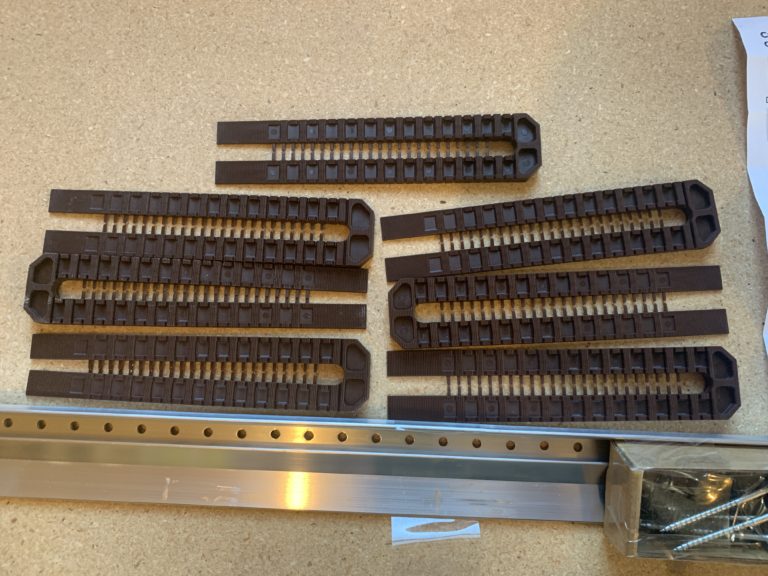



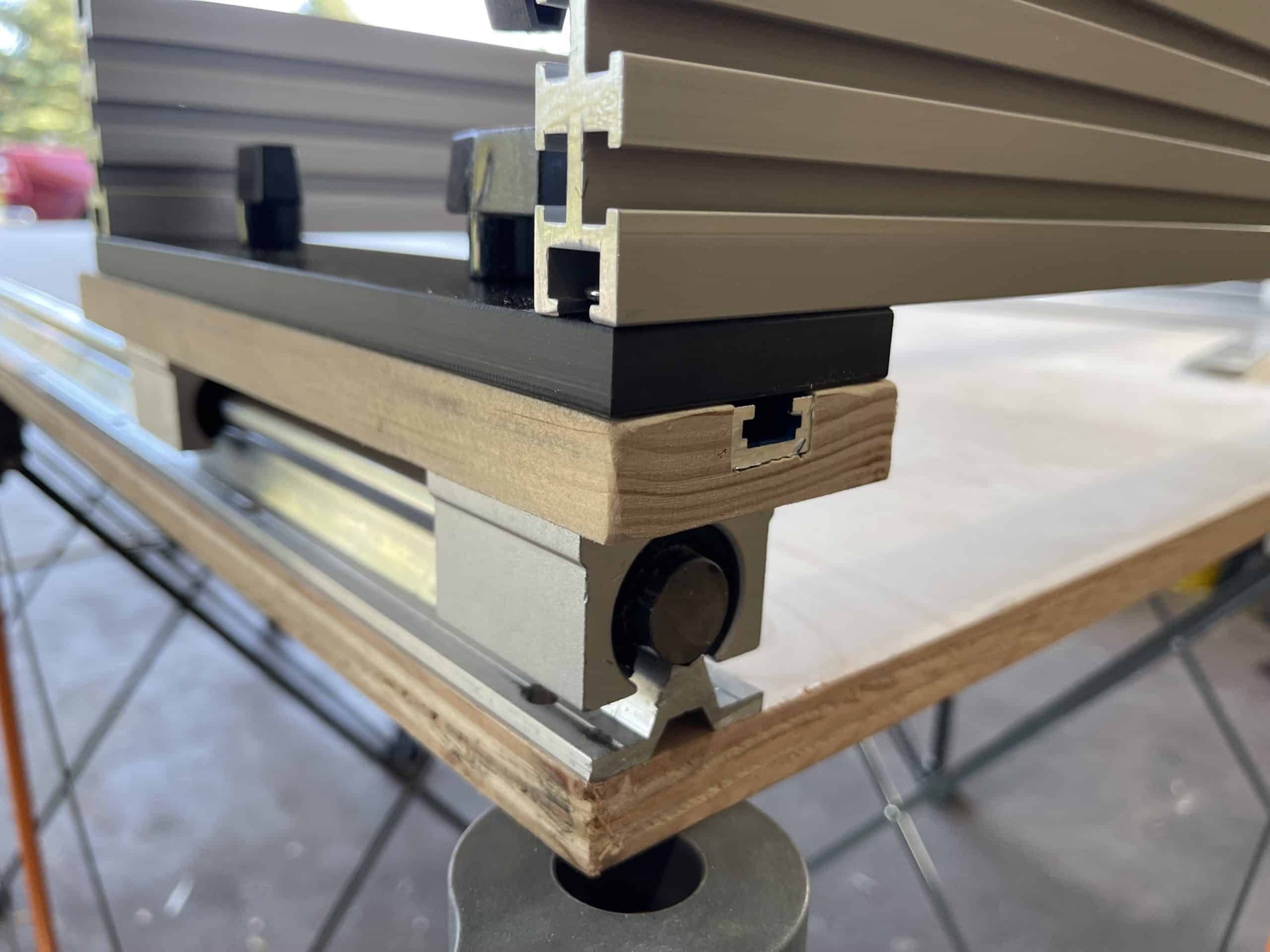
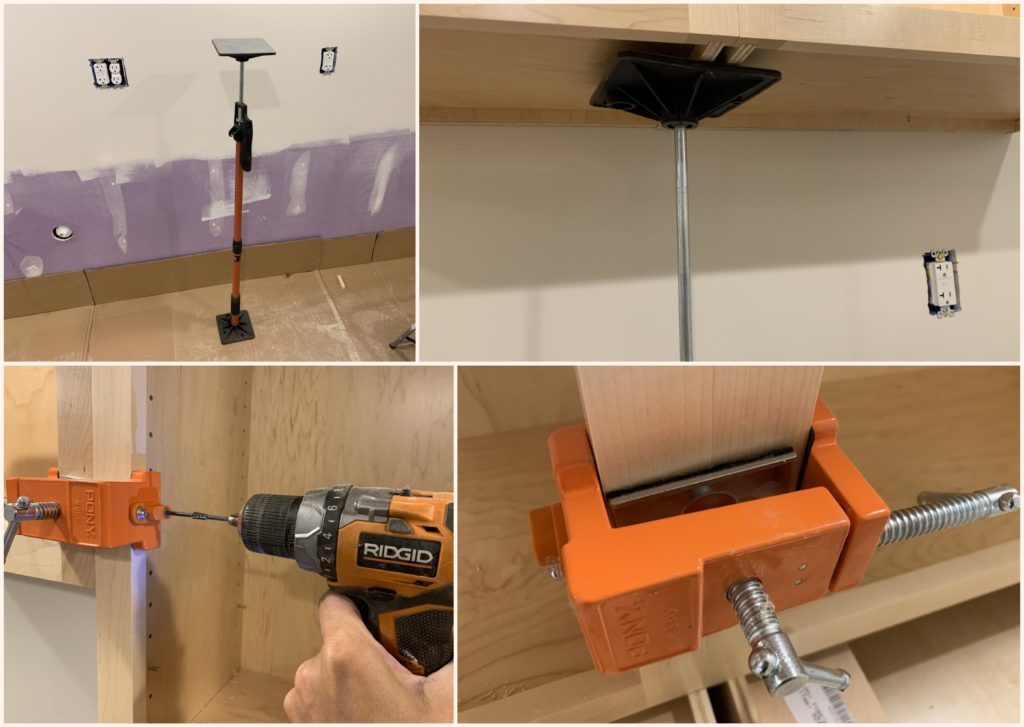
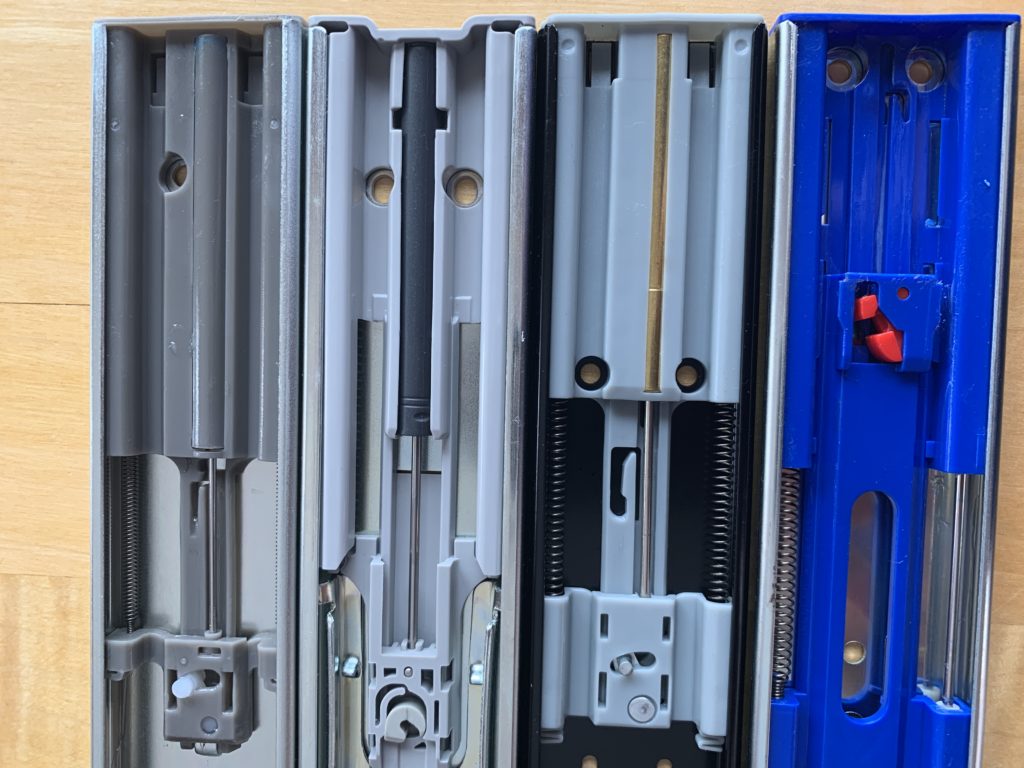
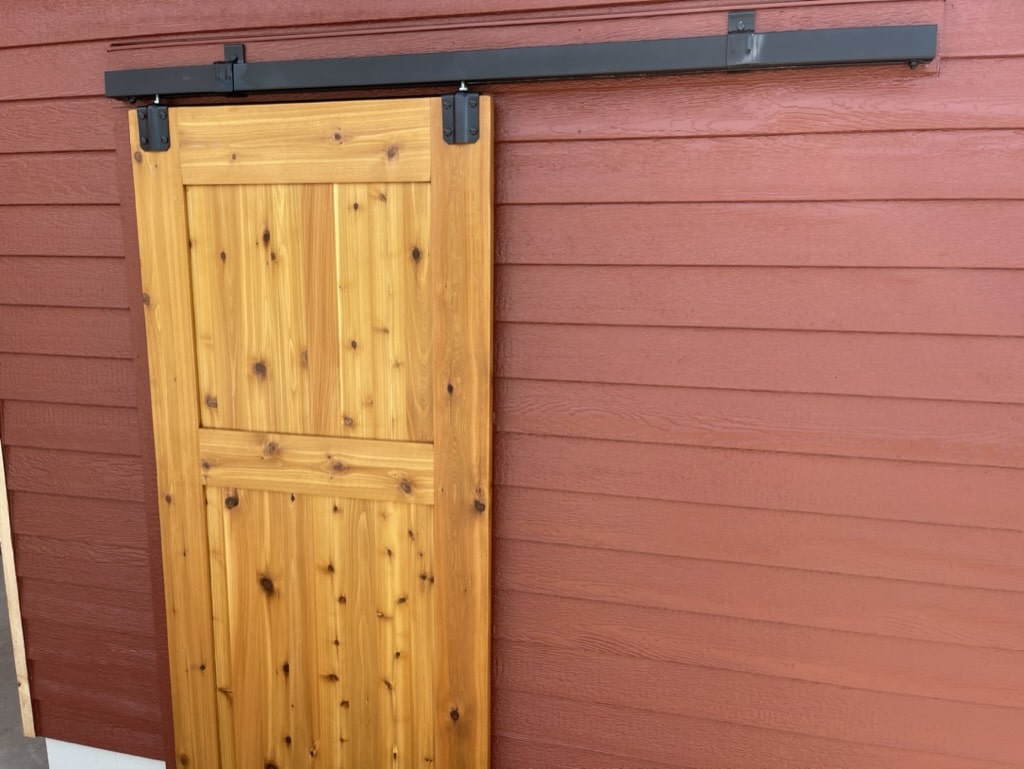
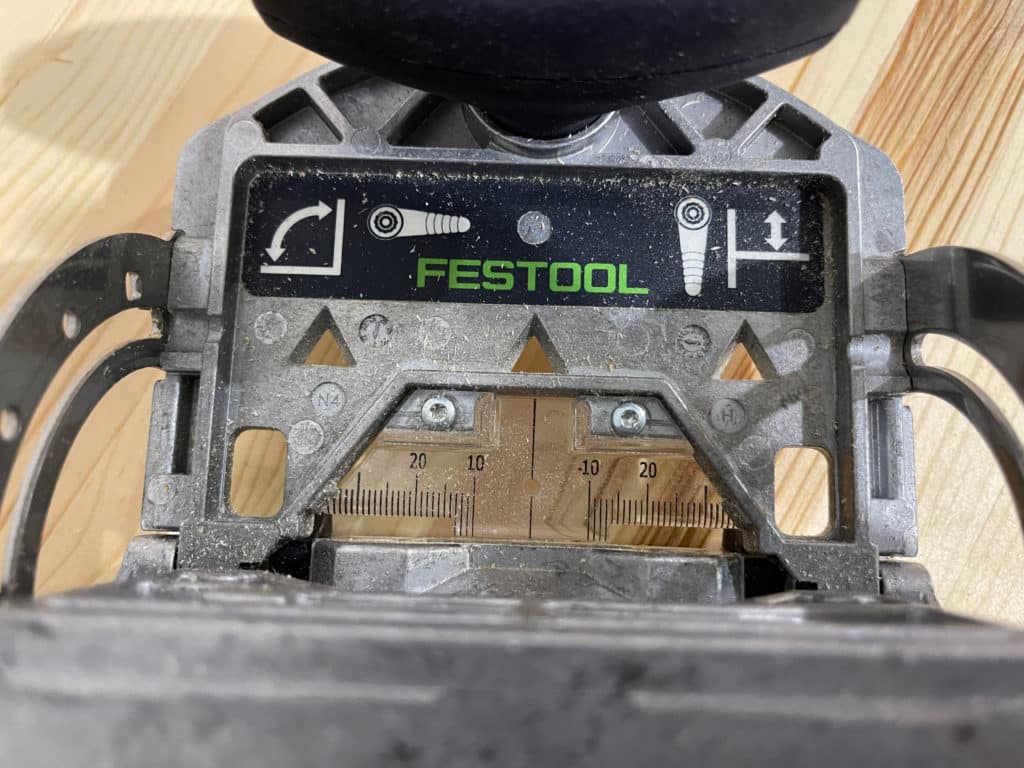
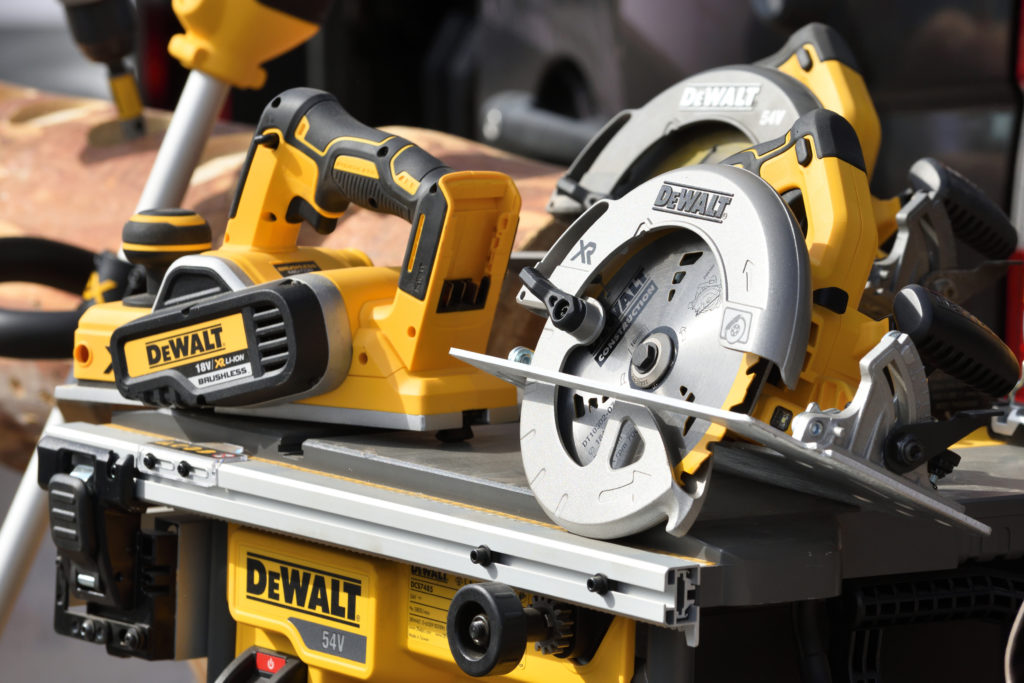
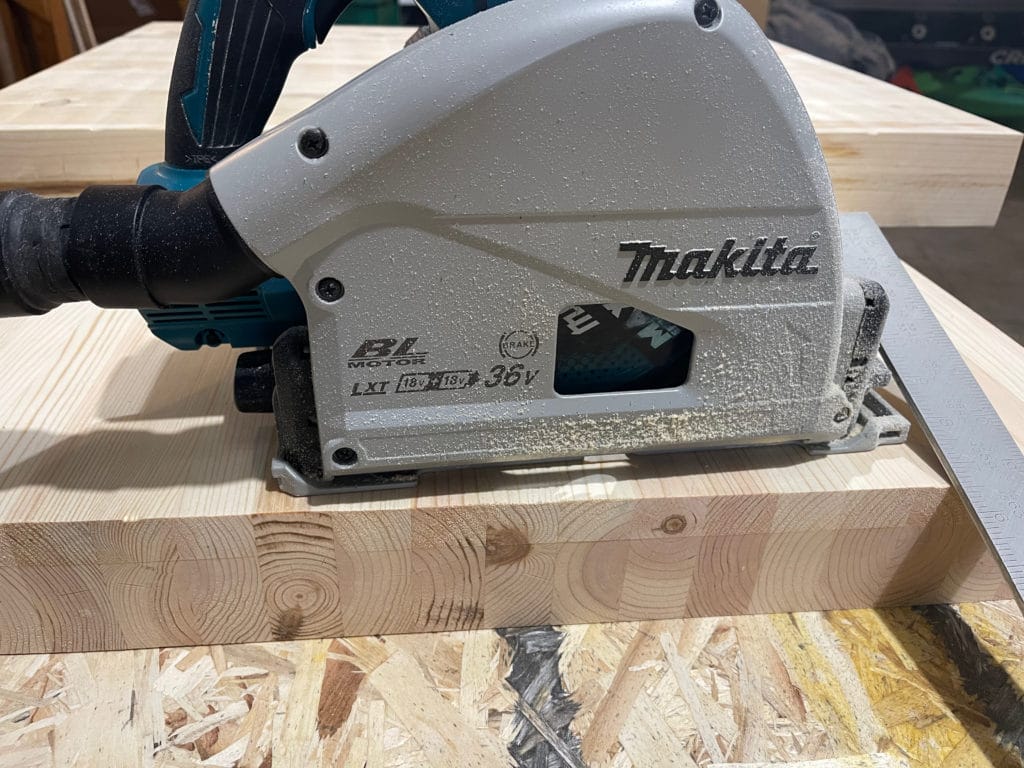
Nice article.
You say that for the french-cleat rail it “will not work on a flat backed cabinet”
Not sure what you mean by that or why. Yes it leaves a little gap but what is he problem with the flat backed cabinet and french cleats.
Also does the Ikea Skeaton rail kit come with attachment gadget that gone into the cabinet. If yes then one could use the SKeaton with most cabinet. I can figure this out on the Ikea website.
Some picture would have helped.
Hi Sanjay,
Great question and I’ll look to get a picture. The reason it won’t work as well on a flat back cabinet that has an end showing (for wall-to-wall cabinets, it is less of an issue) is you won’t want to shim or fill the end of a cabinet to hide the gap created by a french cleat.
Best,
Eric
Thank you for everything you have on this site! It is amazing. It answers so many questions I have had especially as I move forward to cabinet installation. But particularly the question of hanging systems. I have searched and searched for alternatives to screwing cabinets to a wall – a process that seems to be difficult and “hit or miss”. Until I was just perusing the internet and I found your site I never have heard of the HIY system! Going to take a good look at that!
Thanks again! Keep up the good work!